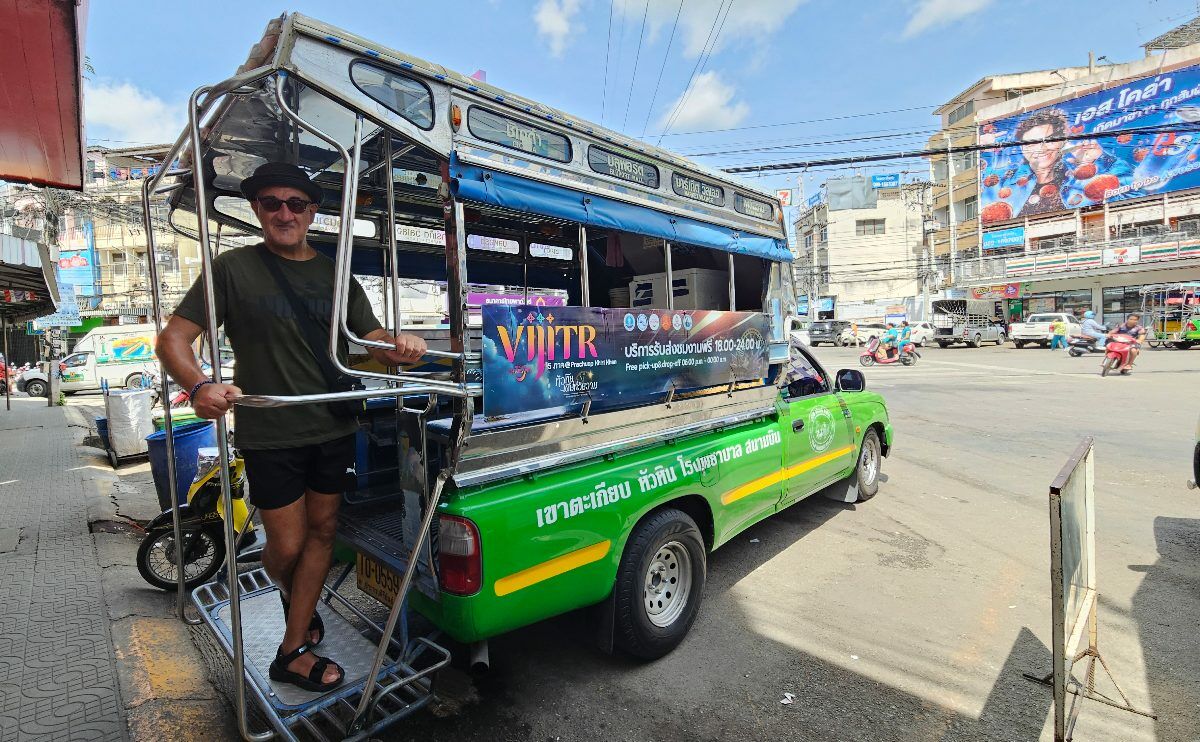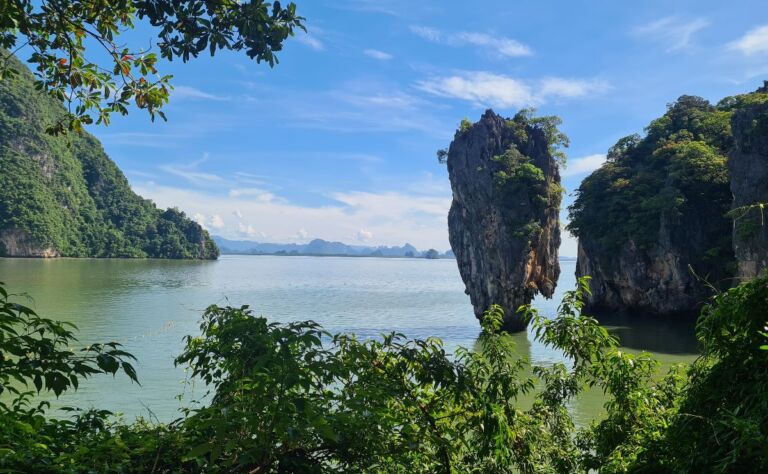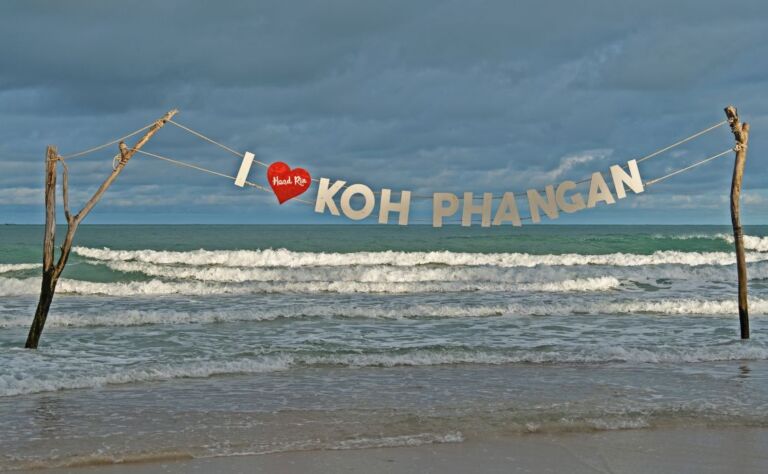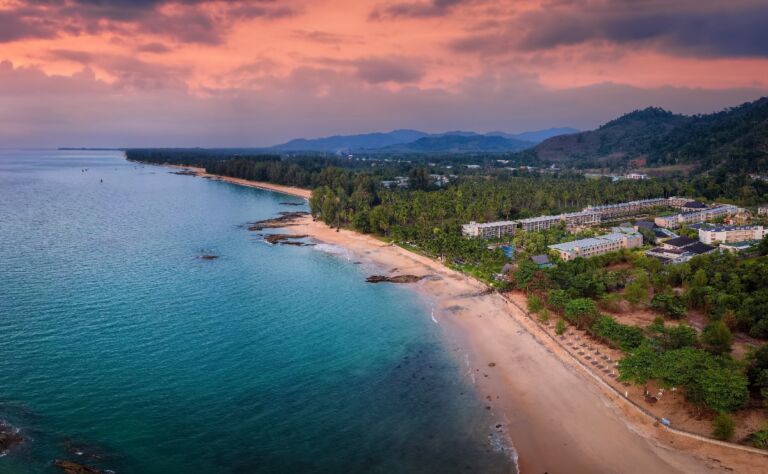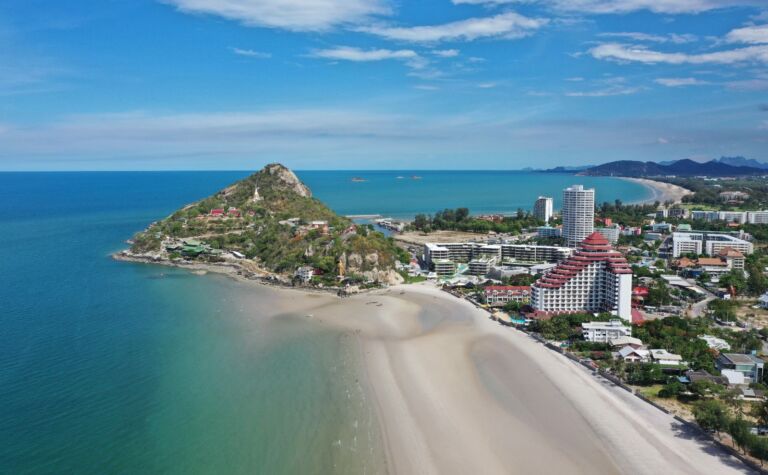The Ultimate Hua Hin Transport Guide [2025]
Is it easy to get around Hua Hin? We think it may be one of the easiest cities in Thailand to explore independently. If you’re planning a vacation or considering retiring here, our transport guide will help you hit the ground running.
This page contains affiliate links. Please see our disclosure policy for more details.
Of all the places in Thailand I’ve spent time in, Hua Hin is the easiest to get around. Other than Bangkok with its public transport system, most cities in Thailand don’t make it easy for anyone not keen to ride a motorbike.
Hua Hin is different. From songtaews to rideshares, getting around this beachside city is a piece of cake. Read on for my experience after living like a local. If you’re considering an extended stay, this may help you decide where to base yourself.
Getting the lay of the land
Phetkasem Road is the chief route through Hau Hin. It runs through town parallel to the beach with numbered sois running off each side. It’s a simple grid and you’ll get the hang of it quickly.
Directions are often given based on a place’s location in comparison to a major site along this road. For example, you might hear “it’s a few sois past Market Village” or “it’s opposite BluPort”. Other landmarks used when describing a location include the night markets, Monkey Mountain, the train station and the airport.
Navigating the Local Bus System in Hua Hin
Hua Hin’s public transport system consists of a public songthaew service, also known as the Baht Bus. If you’ve traveled in Chiang Mai, Pattaya, Phuket or Samui, you may be familiar with them. The ones in Hua Hin operate on fixed routes, similar to those in Pattaya.
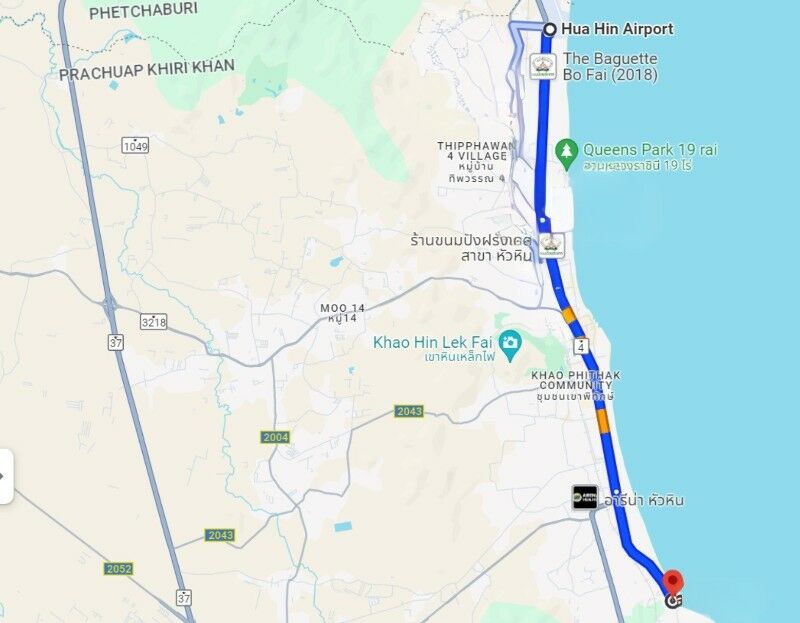
What is a songthaew?
Songthaews are pickup trucks with two benches in the back and a standing board that can hold a few more. There are green ones that service the official route, and private ones that operate like taxis.
Songtheaw, pronounced “songteo,” is Thai for two benches.
The Hua Hin Songthaew Route in 2025
Historically, Hua Hin transport consisted of multiple songthaew routes, but for some years now there has only been one.
Khao Takiab – Airport Route (Green Line)
This 12.5km route has two sections:
- The northern line between the airport and the night market
- The southern line runs from the Night Market to Khao Takiab.
You’ll likely need to change vehicles at the night market to travel past the night market.
The green songthaews on this route run every 15 minutes between 6am and 9pm Monday to Thursday and 10pm on weekends. If you join the route from one of the starting points, you may need to wait for them to fill up before departing.
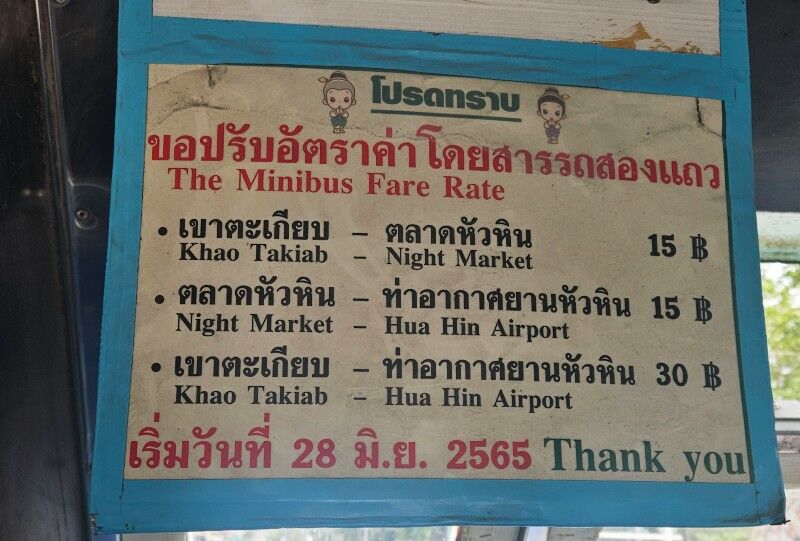
The fare for each leg of the journey is 15 Baht. If you change vehicles to continue, you’ll pay to each driver.
How to ride the Songthaew
It can be intimidating at first, but these are really easy to use. Other than the market and shopping centres, there are not any official stops. Just wait by the side of the road and flag them down when you see one approaching.
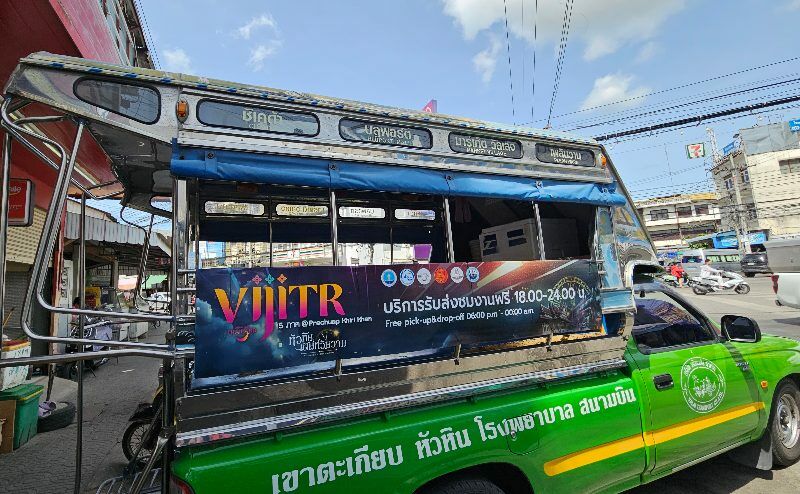
You don’t need to talk to the driver before you get on unless you are not sure where you are going.
Jump on and grab a seat – the first time I got one, I had a knee injury and I was worried about how hard it might be to get on. But there is a step that is a perfect height and makes it really easy. If you are brave, you are free to stand on the side of it.
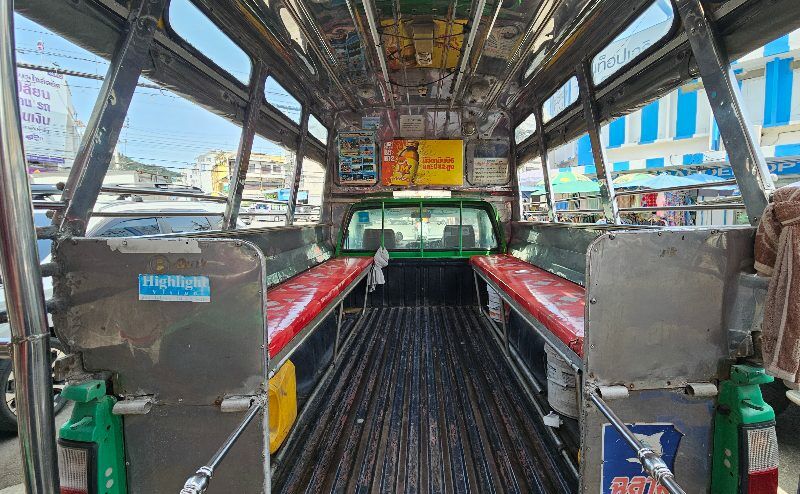
Be aware of how much space you are using and move over so as many people as possible can sit. Your bag should be on your lap or under your feet.
If the vehicle that stops is already quite full and you prefer not to stand, then feel free to wave it on. However lots of people get off at the shopping centres so it might only have to stand for a couple of minutes.
When you are ready to get out, you push the button on the roof. You do not need to give the driver much notice; they stop almost immediately.
Walk to the passenger window and pay the driver – try to have the correct change or a 20 baht note.
You may notice that sometimes they honk as you are walking along the street – this is a friendly way of checking if you would like to jump on.
Getting a private Songthaew
If you need to go somewhere not covered by the green route, you can approach one of the songthaews that you often see outside big condo developments or the malls.
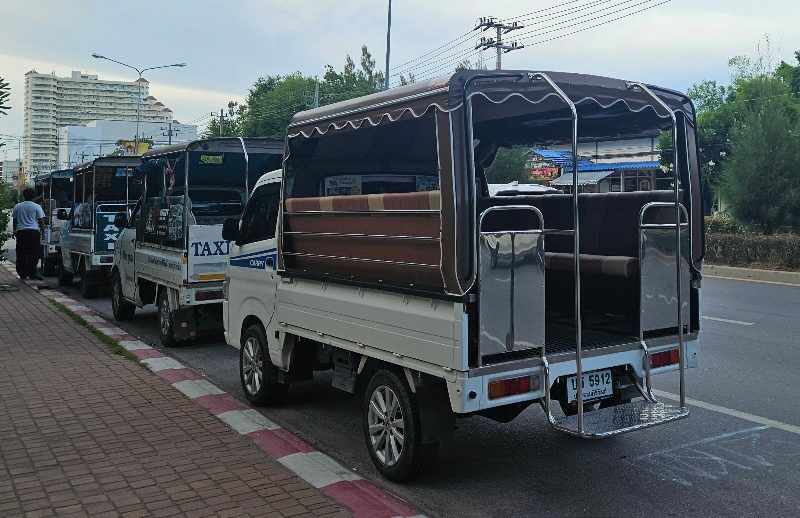
They will often have posters with local sights as suggestions. Tell the driver where you want to go and agree on a price before you get in.
If you need to travel outside the green route a tuk tuk or Grab is your best bet.
Tuk Tuks
There are not as many tuk tuks in Hua Hin as you see in other places. You will find them operating at night, particularly around the markets after the songthaew service ends. Just be sure to negotiate the fare before starting your journey.
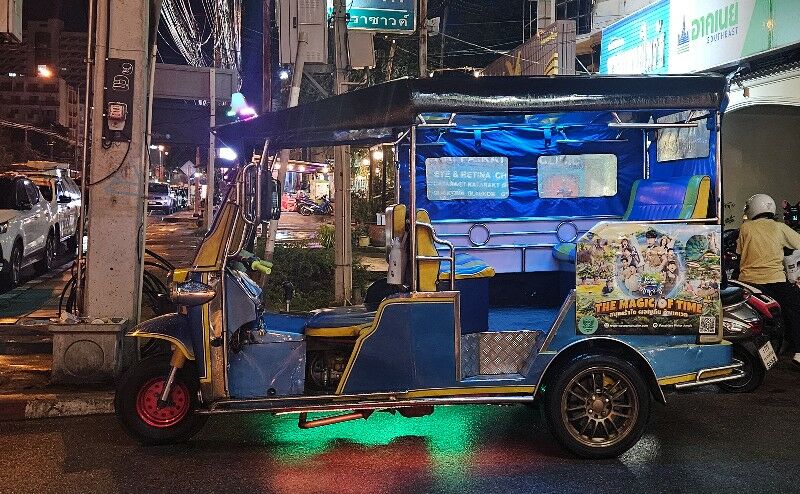
By knowing up front the fare you are less likely to over pay. To be honest I usually just use a Grab at night but a tuk tuk is a fun experience and may not cost any more if your a good negotiator!
Motorbike Taxis
Motorcycle taxis offer quick rides when you need to get somewhere fast. If you’re running late for a tee time at one of Hua Hin’s renowned golf courses, a motorbike taxi can whisk you there in no time while avoiding traffic congestion.
You will need your own helmet or be prepared to risk riding without one.
Rideshare services
Two rideshare services, Grab and Bolt, are operating in Hua Hin. Both are widely used and it comes down to personal preference. They work the same way.
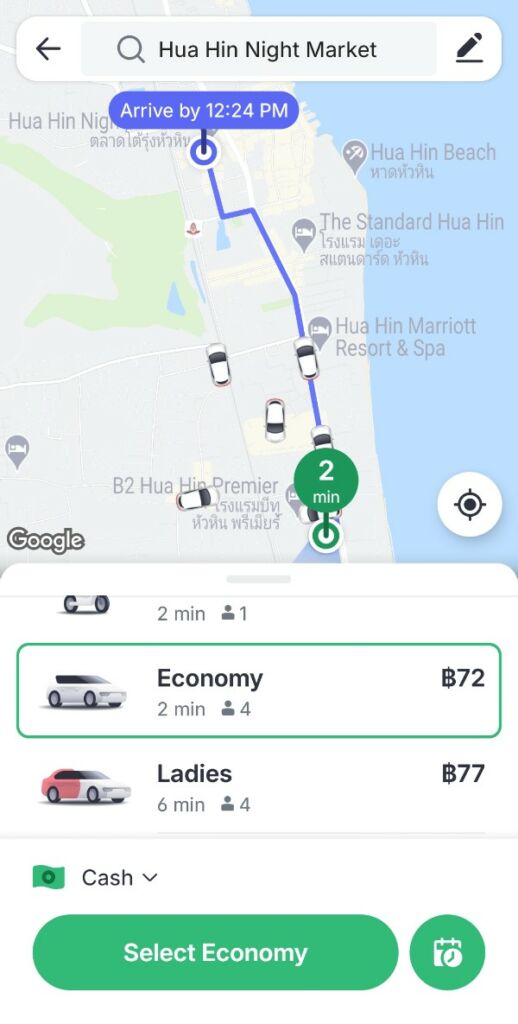
Download the app and create an account. Unlike in most parts of the world in Thailand these services give you the option not to load your credit card but to pay in cash. Many riders choose this to keep their credit card details private. I prefer not to have to negotiate prices so I have a card with a very low credit limit that I use instead.
Grab is one of the most widely used apps in Southeast Asia, including Thailand.
When you are ready to ride, choose your pick-up location and the type of service you want. You can select between cars or motorbikes, lady drivers, and luxury vehicles. Confirm your request and in my experience your driver will arrive within three to five minutes. in central Hua Hin.
Car Rentals
Renting a car provides flexibility and convenience for those wishing to explore areas beyond central Hua Hin. For example, if you’re planning day trips to nearby attractions like Khao Sam Roi Yot National Park or even further, renting a car allows you freedom over your schedule and stops along the way.
When we were planning our stay in Hua Hin, we inquired in a Facebook group about car hire and were inundated with responses. However, I was not comfortable renting a vehicle from a smaller company without firsthand references.
We went to Budget Car Rental near the Grand Hotel and Plaza. The prices were as good as any we were quoted privately and we were able to use our credit card. They also allowed us to purchase our own insurance from a separate company (Rentalcover.com) that we use, keeping costs down.
Motorcycle Rental
You will find motorbikes to rent everywhere you turn, at your hotel or condo, the massage store, and even restaurants.
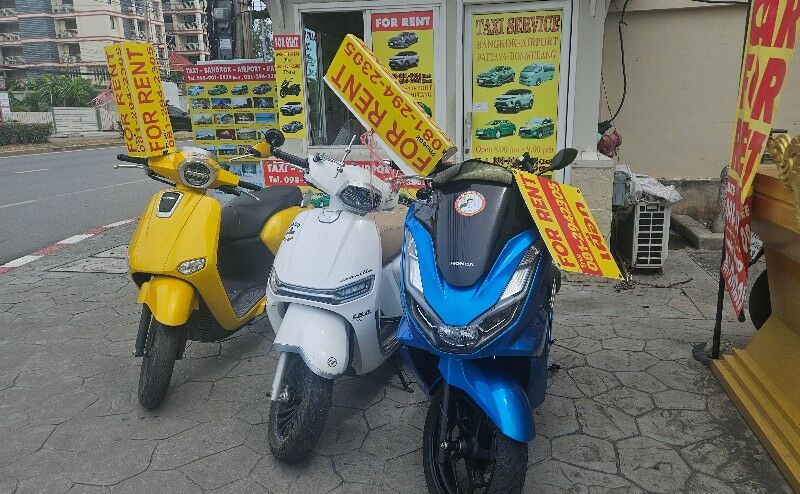
Before you book, ensure you have the correct license and that your travel insurance covers riding motorcycles. We have more general tips on bike rentals included in our article on riding motorbikes in Chiang Mai.
After spending the last eight weeks in Hua Hin without a car, I can assure you it’s super easy and much cheaper to navigate the city using the services above and supplementing with an occasional car rental. What do you think will work best for you?
Ready to start planning your Thailand trip? Our Facebook community Thailand Awaits is here to help. Join fellow travellers, get your questions answered by Thailand experts, and access free planning resources.

